How to Upload Songs to Amazon Music
How do I listen to my music collection on Amazon Music?
If you have spent $9.9/month to become an Amazon Music subscriber, you will be allowed to access over 100 million tracks on Amazon Music. As one of the most popular streaming music services, Amazon Music provides music lovers with a rich music library. But there will also be some users who prefer to upload their music collection to Amazon Music to listen to it online alongside the original Amazon Music. However, it is not so simple to do this.
Uploading or importing your music to Amazon Music is no longer available. Previously, Amazon officially stated: Amazon previously adopted the online music storage plan, allowing users to freely upload and import their audio (up to 250 songs) to Amazon Music for online streaming, and users of joint music storage subscriptions will get larger storage Space: 250,000 songs. But on January 15, 2018, Amazon announced the closure of the service, and users will not be able to upload music after January 2019. This means you cannot currently upload music to the Amazon Music Cloud
However, if you want to import music files into the Amazon Music app and play them as local music audio, it's not impossible. Read on and you'll get the answer below.

Part 1: How to Upload Local Song from Computer to Amazon Music
If you happen to have a few songs on your computer in a regular music format, like MP3, there are a few settings you can make your Amazon Music app read them. With this, you have completed uploading your music collection to Amazon Music.
Step 1 Run the Amazon Music app on your computer. Then click the Setting button.
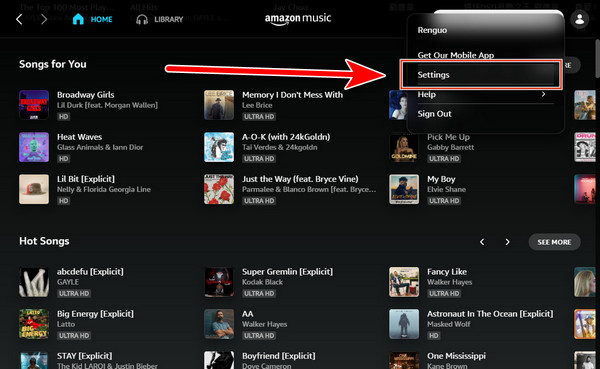
Step 2 Scroll down to find the Automatically Import Music From option. Next, select Select Folder, and choose your local MP3 files.
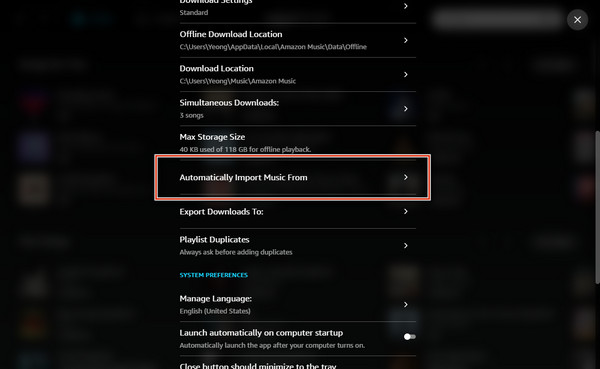
Step 3 Once the import is complete, you can filter for Offline in the Locations section by clicking on Library. You can now see your local audio files imported into the Amazon Music app.
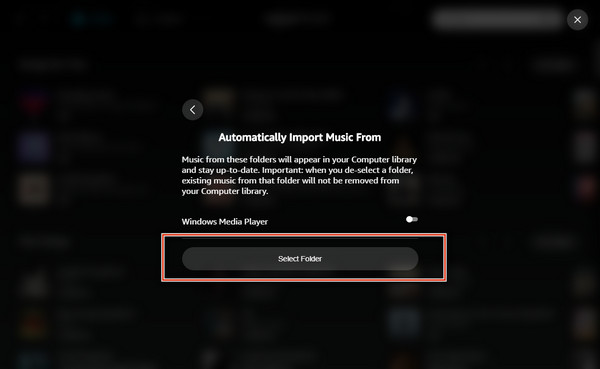
Part 2: How to Convert Amazon Music and Upload to Other Music Services
As mentioned at the beginning, currently Amazon Music does not allow users to import local audio into Amazon Music. But that doesn't mean you can't stream Amazon Music to other streaming services like Apple Music or Spotify Music. This sounds like a good option. But the question is, how to transfer Amazon Music to Apple Music or Spotify Music? Move on and we'll show you its solution next.
To transfer Amazon Music to Spotify Music or Apple Music, you need BotoNote Amazon Music Converter. BotoNote Amazon Music Converter has a built-in Amazon Music web player, so you don't need to download other music apps. It supports converting songs at 10X speed and saving them as MP3/AAC/WAV/ALAC/FLAC/AIFF format. All downloaded songs will be saved locally on your computer, even if you don't need to transfer to other streaming services, you can use them for other personal purposes. Such as burning to CD, transferring to an SD card, or uploading to Apple Watch. In addition, with the help of BotoNote Amazon Music Converter, the converted songs will retain the original sound quality and editable ID3 tags, giving you an excellent listening feast.
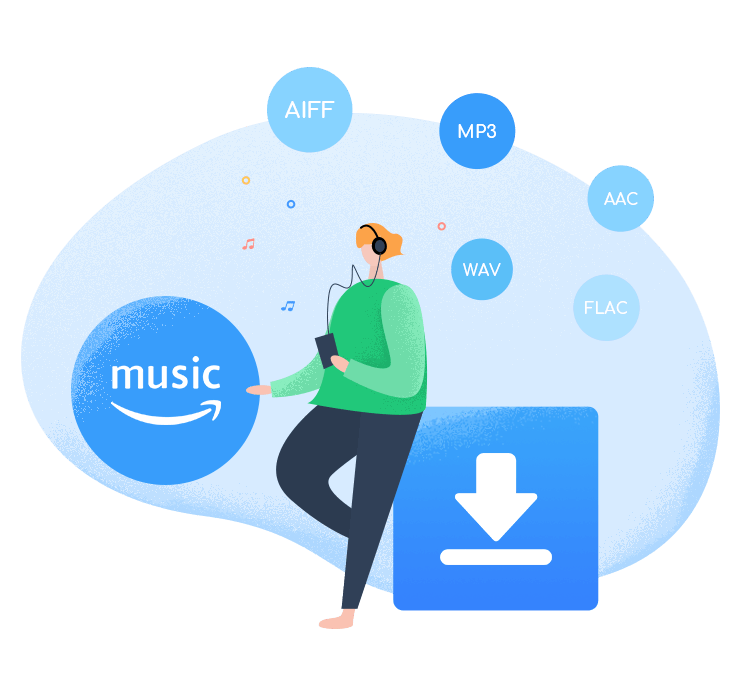
BotoNote iMazone Music Converter
BotoNote iMazone Music Converter is a one-click solution for you to download songs, albums, playlists from Amazon Music.
- Support downloading songs, playlists from Amazon Unlimited & Prime Music.
- Convert Amazon music to MP3/AAC/WAV/FLAC/ALAC/AIFF.
- Keep ID3 tags and lossless audio quality.
- Support converting songs at 10X faster conversion speed.
 If you're seeking a way to convert songs, albums, or playlists from various streaming platforms (like Spotify, Apple Music, Tidal, Amazon Music, Deezer, YouTube, YouTube Music, SoundCloud, DailyMotion, and others) into MP3 files, All-In-One Music Converter is an ideal option.
If you're seeking a way to convert songs, albums, or playlists from various streaming platforms (like Spotify, Apple Music, Tidal, Amazon Music, Deezer, YouTube, YouTube Music, SoundCloud, DailyMotion, and others) into MP3 files, All-In-One Music Converter is an ideal option.
How does it work?
Step 1 Run the BotoNote Amazon Music Converter on your computer and you will see a simple and concise interface. Then click the “Open Amazon Music Web Player” button.
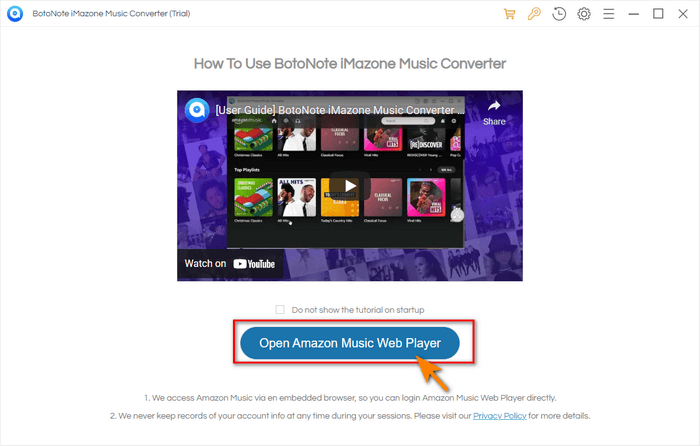
Step 2 Then click the “Sign In” button and log in with your Amazon Music account.

Step 3 Before downloading songs, you need to click the “Setting” button to set the output format.
Output Format: AAC/MP3/WAV/ALAC/FLAC/AIFF
Bit Rate: 128kbps/192kbps/256kbps/320kbps
Sample Rate: 44.1kHz/48kHz/96kHz/192kHz
Output File Name: {Track Number}; {Title}; {Artist}; {Album}; {Year}; {Playlist Index}
Output Organized: None, Artist, Album, Artist/Album, Album/Artist
Note: If you want to set the output folder path, you can click the three dots icon on the far right in the output folder column.

Step 4 Now you can open a playlist, album, or artist and click the “Add to list” button to choose songs. Then click the “Convert Now” button to start downloading songs.
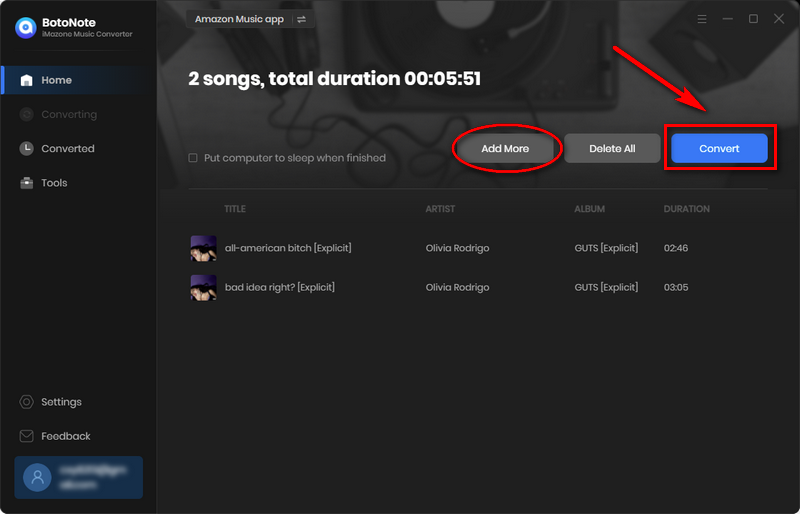
You also can download multiple playlists at one time. Click the "Save to list" button. Then open another playlist, repeat the previous steps of adding songs until all the songs to be downloaded have been added, and click the "Convert" button.
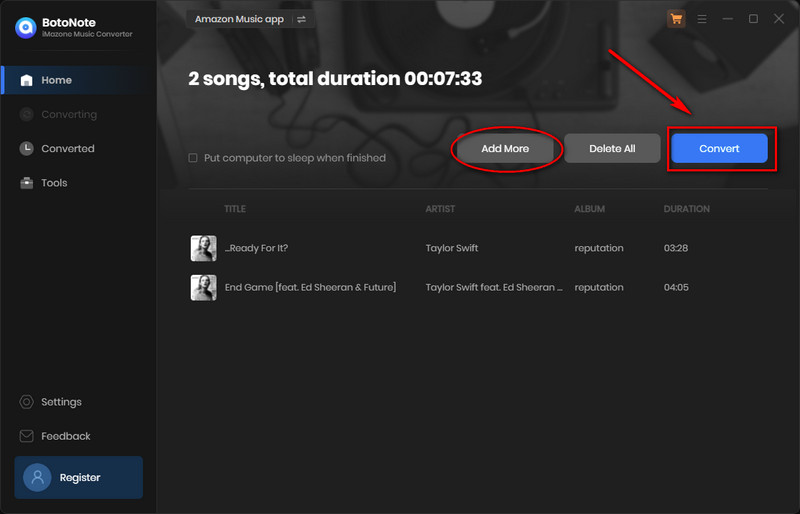
Step 5 After downloading, you can click the “History” button to check the converted songs. Then you can position the mouse on the song name, you will find a file icon on the right side of the song name. Click the icon and you will find the specific location of the song on the computer directly.

Now, you can easily import Amazon Music songs to any music service, such as Apple Music or Spotify Music, without any limitation. Start enjoying!
Summary
After reading this article, you will find that currently you cannot transfer local music to Amazon Music. But you can easily download Amazon Music to MP3/AAC/WAV/ALAC/FLAC/AIFF and other common audio formats with the help of BotoNote Amazon Music Converter, and import them to other streaming services, such as Apple Music and Spotify Music. At the same time, you can also use the downloaded Amazon Music for more personal purposes. Since Amazon has officially announced that downloading songs for offline listening is not allowed, BotoNote Amazon Music Converter is worth a try!

Rachel Myrick is an experienced writer who is obsessed with music. She is always interested in new things and has been attracted deeply by writing. Rachel has experimented with new formats, exploring music and music on digital platforms.
Related Post
- How to Download Podcasts from Amazon Music
- How to Download Amazon Music to Computer
- How to Download Amazon Music to Android
- How to Download Music from the Amazon Web Player
- How to Export Amazon Music Playlists to Computer
- How to Convert Amazon Music to MP3
- The Best Two Ways to Download Amazon Music to an SD Card
Rachel Myrick